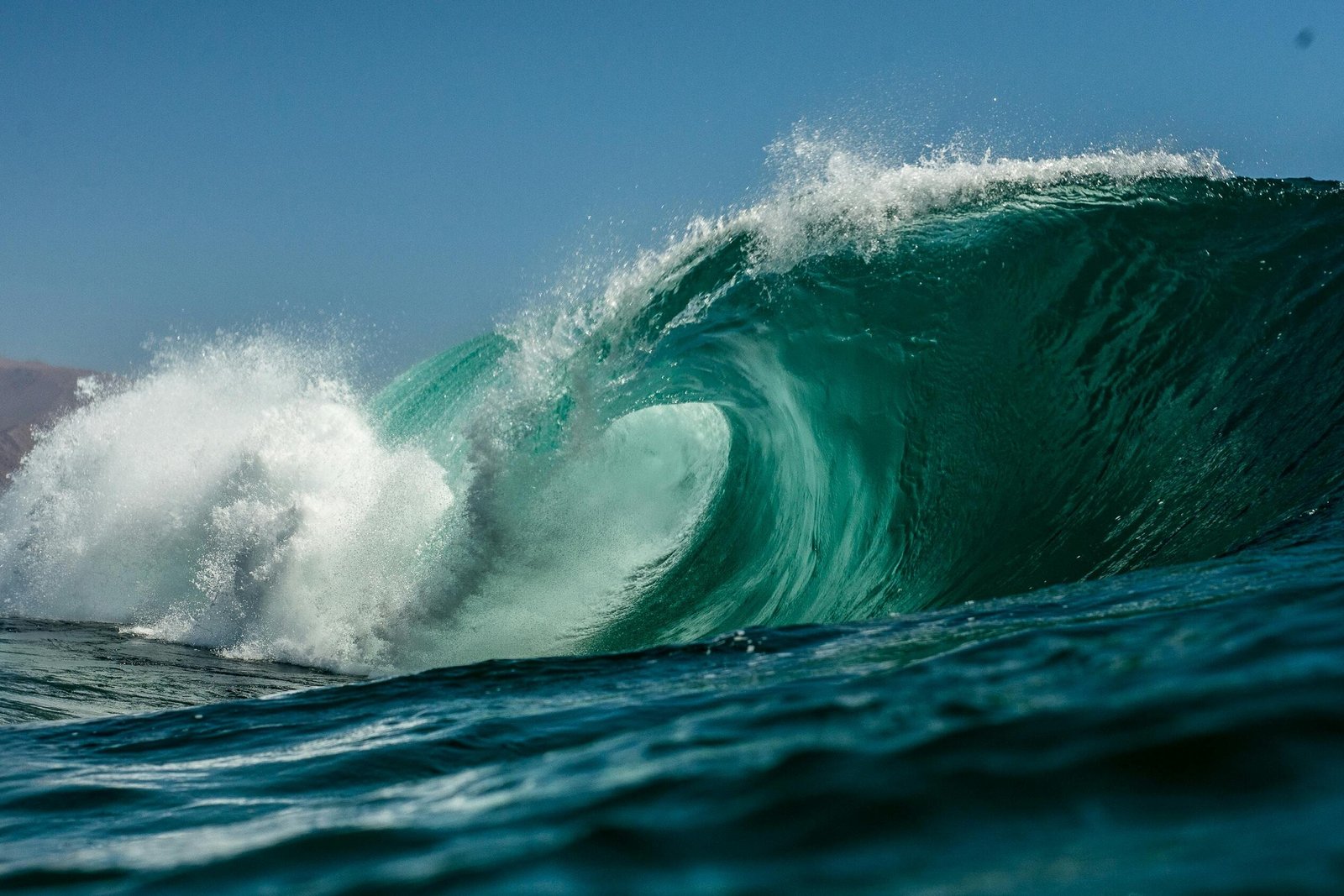Unprecedented Ocean Warming Surpasses Projections

Recent ocean temperature data has left climate scientists deeply unsettled. Despite previous models predicting gradual warming, the latest measurements show ocean temperatures rising at an alarming rate. Some regions are experiencing record-breaking heat levels, far exceeding what climate models anticipated. The acceleration of ocean warming suggests that climate change is unfolding faster than expected, raising concerns about the accuracy of current projections.
This extreme warming is already having devastating consequences. Marine heatwaves are intensifying, disrupting ecosystems, and triggering mass die-offs of marine species. Coral reefs, vital for biodiversity, are suffering widespread bleaching events, while fish populations are migrating to cooler waters, threatening global fisheries. The implications extend beyond the ocean, as warmer waters contribute to stronger hurricanes and rising sea levels, further exacerbating climate-related disasters.
Deep Ocean Currents Are Slowing Down Alarmingly
One of the most shocking findings from recent ocean studies is the dramatic slowdown of deep ocean currents. These currents regulate global climate by redistributing heat and nutrients throughout the oceans. When they slow down, weather patterns become more erratic, leading to prolonged droughts, stronger storms, and unpredictable temperature shifts across continents.
The consequences of this disruption could be catastrophic. A weakening of deep ocean currents could lead to extreme weather events becoming more frequent and severe. Scientists are particularly worried about the Atlantic Meridional Overturning Circulation (AMOC), which influences the climate of Europe and North America. If it collapses, it could trigger a sudden climate shift, plunging some regions into deep freezes while others face extreme heat waves.
Ocean Acidification Is Reaching Dangerous Levels
The ocean has absorbed nearly a third of the carbon dioxide humans have released into the atmosphere, but this has come at a cost. As CO₂ dissolves in seawater, it forms carbonic acid, lowering the ocean’s pH and making it more acidic. Scientists have now observed a worrying acceleration in ocean acidification, threatening marine life that relies on stable pH levels for survival.
Shellfish, corals, and other marine organisms with calcium carbonate shells are particularly vulnerable. As acidification progresses, these species struggle to build and maintain their protective structures, leading to population declines. The disruption of marine food chains could have ripple effects, affecting not just ocean ecosystems but also coastal communities that depend on seafood for food and economic stability.
Rapid Ice Melt Is Raising Sea Levels Faster Than Expected
Glaciers and ice sheets in polar regions are melting at an unprecedented pace, contributing to rising sea levels at rates higher than previously projected. The melting of the Greenland and Antarctic ice sheets has added trillions of tons of water to the ocean, submerging coastlines and displacing communities. Scientists warn that if current trends continue, many coastal cities could become uninhabitable within decades.
Beyond immediate flooding risks, melting polar ice disrupts ocean salinity and circulation patterns, further intensifying climate instability. With every fraction of a degree in warming, the risks of irreversible tipping points grow. The latest data has forced climate researchers to reconsider worst-case scenarios, suggesting that sea level rise could happen much faster than the public has been led to believe.
Methane Releases from the Ocean Floor Are Accelerating
A particularly troubling discovery in recent ocean data is the increased release of methane from the seafloor. Methane is a potent greenhouse gas, with a warming potential far greater than carbon dioxide. As ocean temperatures rise, methane hydrates—frozen methane deposits trapped in the seabed—are beginning to destabilize and release gas into the atmosphere.
This process, known as the “methane time bomb,” has long been a concern for climate scientists. The sudden release of large amounts of methane could trigger a rapid increase in global temperatures, creating a feedback loop that accelerates warming even further. With recent data confirming that methane emissions from oceanic sources are rising, the urgency to curb global warming has never been greater.
Oxygen Levels in the Ocean Are Plummeting
One of the most alarming discoveries in recent ocean studies is the rapid decline in oxygen levels. Warmer waters hold less dissolved oxygen, making it harder for marine life to survive. Scientists have found that vast regions of the ocean, known as “dead zones,” are expanding as oxygen levels drop. These areas can no longer support fish, leading to mass die-offs and disrupting entire ecosystems.
This decline in ocean oxygenation isn’t just a threat to marine biodiversity; it has direct consequences for human populations. Fisheries that depend on healthy marine ecosystems are experiencing declining catches, affecting global food supplies and economies. Additionally, low-oxygen zones can amplify the effects of climate change by releasing stored carbon and methane, further accelerating global warming.
Rising Sea Temperatures Are Supercharging Storms

As ocean temperatures rise, the energy available for storms increases, making hurricanes, typhoons, and cyclones more intense. Recent climate data shows that storms are becoming stronger, lasting longer, and causing unprecedented destruction. The warming of the Atlantic and Pacific Oceans has led to an increase in Category 4 and 5 hurricanes, with some storms forming outside traditional seasons.
This shift in storm intensity is already having devastating impacts on coastal communities. Flooding, storm surges, and high winds are causing billions of dollars in damage each year, with some regions becoming uninhabitable. If ocean warming continues unchecked, scientists warn that the world could see storms of unprecedented strength, overwhelming existing disaster response systems and infrastructure.
The Gulf Stream Is Showing Signs of Collapse
The Gulf Stream, a major ocean current that regulates climate patterns in North America and Europe, is weakening at an alarming rate. This current helps distribute heat and maintain seasonal weather patterns, but new data suggests it is slowing down due to melting ice and increased freshwater influx from the Arctic. Scientists warn that if the Gulf Stream collapses, it could lead to severe cold snaps in Europe, rising sea levels along the U.S. East Coast, and disrupted monsoon patterns in Africa and Asia.
A collapse of the Gulf Stream would mark one of the most extreme climate shifts in human history. The disruption of this oceanic conveyor belt could trigger prolonged droughts, food shortages, and extreme weather events that would affect millions. Some researchers fear that a tipping point may be approaching faster than anticipated, making the need for climate intervention more urgent than ever.
Ocean-Based Carbon Sinks Are Becoming Less Effective
Oceans have long acted as carbon sinks, absorbing vast amounts of carbon dioxide from the atmosphere. However, new data suggests that this process is becoming less effective. Warmer waters and ocean acidification are reducing the ocean’s ability to sequester carbon, allowing more CO₂ to remain in the atmosphere.
This weakening carbon absorption capacity has profound implications for climate change. With the ocean absorbing less CO₂, atmospheric carbon levels are rising even faster, intensifying global warming. Some scientists are now exploring geoengineering solutions, such as artificial carbon capture, but these technologies remain in early stages. If the ocean continues to lose its ability to regulate carbon, the pace of climate change could accelerate beyond current predictions.
Extreme Marine Heatwaves Are Becoming More Frequent
The frequency and duration of marine heatwaves have increased dramatically in recent years. These prolonged periods of abnormally high ocean temperatures are devastating to marine life, causing widespread coral bleaching, mass fish die-offs, and disruptions in oceanic food chains. Recent studies show that some regions are experiencing heatwaves that last months instead of weeks, with ocean temperatures reaching record highs.
Marine heatwaves don’t just affect ocean ecosystems; they also impact global weather patterns. The increased evaporation from warmer waters fuels stronger storms, disrupts rainfall cycles, and leads to more extreme droughts and floods on land. Scientists warn that unless greenhouse gas emissions are drastically reduced, marine heatwaves will continue to intensify, with far-reaching consequences for both the environment and human societies.
Rising Ocean Acidity Threatens Marine Life
The increasing acidity of the ocean is a growing concern for climate scientists. As carbon dioxide levels in the atmosphere rise, more of it gets absorbed by the ocean, leading to chemical reactions that make seawater more acidic. This process, known as ocean acidification, is devastating marine ecosystems, particularly coral reefs, which struggle to build and maintain their calcium carbonate structures. Many species dependent on coral reefs for shelter and food are facing an existential threat.
The long-term impact of ocean acidification extends beyond marine life. Fisheries and coastal economies are at risk as shellfish populations decline and fish habitats deteriorate. Scientists fear that without intervention, entire oceanic food chains could collapse, leading to severe economic and ecological consequences. The urgency to reduce carbon emissions has never been greater as the ocean’s chemistry continues to shift at an alarming rate.
Deep-Sea Currents Are Slowing Down
Recent data suggests that deep-sea currents, which play a vital role in regulating Earth’s climate, are slowing down. These currents distribute heat and nutrients across the globe, ensuring stable weather patterns and supporting marine biodiversity. However, melting ice caps and increasing ocean temperatures are disrupting these flows, causing concerns among climate experts. If these currents weaken further, weather patterns could become more extreme, with prolonged droughts, stronger storms, and disrupted monsoon cycles.
One of the most alarming predictions is that changes in deep-sea currents could lead to a slowdown or shutdown of the Atlantic Meridional Overturning Circulation (AMOC), a key component of Earth’s climate system. Such a scenario would drastically alter weather conditions across Europe, North America, and other regions. Scientists warn that humanity must act swiftly to mitigate these disruptions before they become irreversible.
The Uncertain Future of Coastal Cities

Coastal cities are already experiencing the direct effects of climate change, but recent ocean data has further intensified concerns. Rising sea levels, stronger hurricanes, and unpredictable weather events are making urban planning and infrastructure development increasingly challenging. Cities like Miami, Jakarta, and New York are implementing flood barriers and emergency response strategies, but these measures may not be enough to counteract the speed of environmental change.
Scientists argue that large-scale adaptations, such as relocating populations and redesigning urban landscapes, may become necessary in the near future. With ocean levels rising faster than anticipated, governments worldwide are under pressure to find sustainable solutions to protect millions of people from displacement. The latest data serves as a wake-up call, emphasizing the need for immediate action before it’s too late.
